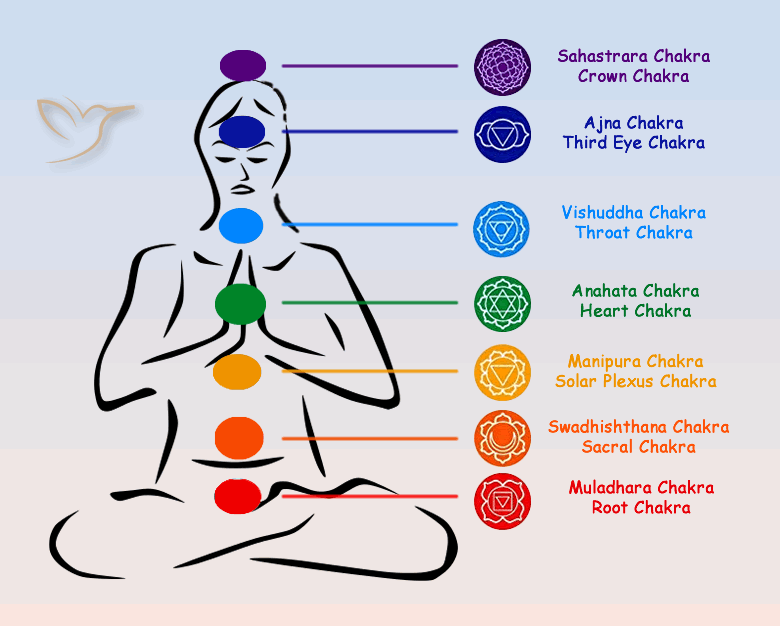Chrysocolla Gemstone Information

Introduction
Chrysocolla might not be the most famous gemstone out there, but it's gaining popularity for crafting unique modern jewelry, like those wire-wrapped pendants. Its detailed patterns, vibrant greens and blues, plus the fact that it comes in large, unconventional shapes, make it a fun choice for creative pieces. Explore Chrysocolla to see why it’s becoming a favorite among artisans.
Beyond jewelry, collectors love Chrysocolla for its striking and intricate look. And hey, if you're into the spiritual side of things, many people value it for the positive energies and benefits it’s said to bring.
Chrysocolla Colors

The top picks for Chrysocolla, and the ones that cost more, are those with vivid blue or green tones - think turquoise or teal shades. That color comes from copper in the stone's makeup during its formation.
You rarely find Chrysocolla in a pure blue or green state because it would be too soft and prone to crumbling. Instead, it's often blended with minerals like quartz, chalcedony, or opal. This mix not only toughens it up but also introduces swirls and spots of other colors, adding to its visual appeal.
Chrysocolla Species
Chrysocolla is a copper silicate, and by itself, it's an odd substance - more like a hardened silica gel than a typical mineral. It frequently forms alongside other minerals such as chalcedony, turquoise, malachite, or quartz, resulting in varied colors and designs that make it sturdy enough for gem use.
Some notable varieties include:
- Eilat Stone - A greenish-blue type mixed with turquoise and malachite, sourced from southern Israel.
- Stellarite – A pale blue stone combining Chrysocolla and quartz, also known as Chrysocolla Quartz.
- Parrot Wing – A blend of Chrysocolla and jasper in greenish-brown tones.
- Gem Silica – Sometimes referred to as Chrysocolla Chalcedony, this rare and pricey stone gets its color from copper but isn't strictly in the Chrysocolla group.
Chrysocolla falls into the cryptocrystalline category, similar to agate, jasper, carnelian, and onyx. These have tiny crystals invisible to the naked eye, making them opaque with mixed materials that create interesting patterns and a rugged look.
On the other hand, macrocrystalline stones like quartz, amethyst, and citrine feature larger crystals, are often see-through, and tend to be harder.
Chrysocolla Clarity and Cut

Chrysocolla is typically opaque, though some recent finds with added silica can appear almost see-through.
Clarity refers to how much you can see through the stone and whether it has internal flaws, called inclusions in the trade.
Gemstones range from transparent (where you can easily read text or spot objects through them), to translucent (light passes but shapes are blurry), to opaque (no light gets through, even against a bright source).
Clarity grades span from flawless transparency to full opacity.
Chrysocolla stones are commonly shaped into domed cabochons. Ovals are standard, but you'll also see squares, pears, and freeform designs perfect for custom jewelry.
Disclaimer: The details on spiritual meanings, chakra associations, and health benefits of Chrysocolla are shared for informational purposes only. They are based on historical and cultural beliefs and should not replace professional medical advice. Always consult a healthcare expert for health-related issues.
Spiritual Meaning of Chrysocolla
People have used Chrysocolla for millennia, and its name dates back to around 300 BC. The Greek philosopher and botanist Theophrastus named it after a borax-like substance used in gold welding - Chryso for gold and colla for glue.
Around that era, Ancient Egyptians buried Chrysocolla amulets with mummified children, hinting at its role as a protector for the young.
Legend has it that Cleopatra carried Chrysocolla during tense negotiations with her brother or the Romans to keep tempers in check and maintain calm.
Similarly, Chrysocolla is known as a stone for communication, aiding both speaking and listening. It's great for teachers or public speakers - consider bringing one to your next meeting or talk.
Wise women, healers, midwives, and elders often connect deeply with Chrysocolla. It supports sharing knowledge across generations, keeping wisdom alive.
Continuing this, Chrysocolla carries feminine energy, linked to the Greek Goddess Sophia, fostering wisdom, peace, and care. Learn more about Chrysocolla’s spiritual significance and its historical uses.
Chrysocolla and the Chakras

The term Chakra, from ancient Hindu traditions, means wheel or circle and points to energy centers in the body - known as Qi or Prana elsewhere. Seven main chakras handle different physical, emotional, or mental aspects.
These include the Crown, Third Eye, Throat, Heart, Solar Plexus, Sacral, and Root. Each links to a color, and gems with matching dominant hues often connect to that chakra.
Chakras can sometimes shift out of balance or get blocked, needing adjustment. Chakra stones, colored to match specific points, can help: red for Root, orange for Sacral, yellow for Solar Plexus, green for Heart, blue for Throat, indigo for Third Eye, and purple for Crown.
With its blue and green shades, Chrysocolla ties to the Throat Chakra, aligning with its communication links in various cultures. A blocked Throat Chakra might show as a sore throat, neck pain, or anxiety about speaking.
To help balance it, place a Chrysocolla at your throat base while lying down and breathing steadily, or wear it as a pendant daily.
Health Benefits of Chrysocolla
Physically, Chrysocolla is thought to ease issues like sore throats, thyroid problems, laryngitis, and larynx concerns. It may also support with high blood pressure, circulation, menopause, PMS, childbirth, and nervous conditions.
We're not experts here, but from years of dealing with these stones and hearing from customers, we've picked up some insights. If you're wondering how to use them for spiritual or wellness purposes, here are a few ideas.
Wearing it as jewelry is straightforward for ongoing influence, or keep one in your pocket as a touchstone.
During meditation, hold it or place it nearby. If meditation isn't your thing, lie down with stones aligned to chakras.
Add it to your bathwater or tub edge (ensure it's water-safe first).
Chrysocolla is said to energize workspaces and shield tech, so try one on your desk.
For cleansing, rinse under running water - a natural source is best, but tap works - then sun-dry for about 30 minutes. It's delicate, so avoid harsh methods.
Chrysocolla Price

Chrysocolla Price List |
||
| Color | Weight range | Price range / USD |
|---|---|---|
|
Multicolor |
1ct + |
$0.5 - $5/ct |
Price hinges on color. A uniform shade leaning green or blue ranks highest. Veins or patches of other hues are common, and if they form appealing designs, that can boost value rather than lower it.
As an opaque stone, seek a smooth, glossy polish without chips or cracks.
Shapes often include ovals, rounds, or pears, but cutters now experiment with forms to highlight natural patterns and colors.
Sold by carat, but check dimensions for accuracy. Larger pieces cost more, all else equal.
With its vivid colors and patterns, Chrysocolla is eye-catching yet affordable. It shines in displays or jewelry, drawing compliments.
Chrysocolla Discovery and History

Humans have worked with Chrysocolla for thousands of years, with early sources in southern Israel's mines near modern Eilat by the Gulf of Aqaba. For a while, it was dubbed King Solomon Stone, tied to the biblical king, with tales linking it to the fabled King Solomon’s Mines in Africa.
Theophrastus documented it in 315 BC, and its softness made it popular for carving in ancient Greece and Rome. Egyptian mummies of children often include Chrysocolla arm amulets for afterlife protection.
Hippocrates noted its healing potential, and medieval doctors used it for wound cleaning and eye treatments.
Resembling turquoise and malachite, Chrysocolla served as a substitute. Inca, Aztec, and Native American groups used it and turquoise for decoration, ceremonies, and spiritual practices.
Where is Chrysocolla Found?

Chrysocolla appears worldwide, with key sources in the USA, Mexico, Chile, Peru, Australia, Russia, and notably Israel for its historical ties.
How is Chrysocolla Formed?

Composed of oxygen, copper, silica, aluminum, and hydrogen, Chrysocolla is a copper silicate formed through combination processes.
As a secondary copper mineral, it emerges when copper alters via chemical reactions, often from carbon dioxide-laden water percolating through, collecting elements in cracks where they solidify.
This base mixes with quartz, chalcedony, malachite, turquoise, or azurite - sometimes multiple - complicating exact composition.
Can Chrysocolla Be Treated?
To our knowledge, Chrysocolla receives no treatments beyond standard cutting and polishing into cabochons.
Pure forms can be brittle and hard to work, needing additions like quartz for strength. All-blue or green rough is tough to shape.
We've heard of epoxy stabilization for hardness, but we avoid those and disclose any treatments on our stones.
What Jewelry is Chrysocolla Suitable For?
At 2-4 on Mohs scale, Chrysocolla is soft among gems, so handle jewelry carefully. Protective mounts are essential, and rings or bracelets may chip over time.
That said, blends with harder minerals like quartz (Mohs 7) increase durability.
It's perfect for standout pendants or necklaces, available in big sizes, shapes, colors, and patterns. In proper settings, larger pieces hold up to everyday wear.
How to Care for Chrysocolla
Among the softer gems, Chrysocolla needs gentle handling in storage and wear. Use protective settings and store away from harder stones to prevent scratches.
It reacts poorly to acids, solvents, and heat, so clean with a soft brush in lukewarm soapy water, then cloth-dry.
How to Tell a Real Chrysocolla

A certified stone from a trusted seller ensures authenticity, but that's not always straightforward online or in stores when hunting deals.
Get familiar with Chrysocolla's look: greenish-blue shades with brown, black, red, or yellow veins and patches. Polished, it has a sheen and often comes large.
It's not pricey, but suspiciously low costs signal fakes - if it seems too cheap, it probably is.
Hardness tests help, but vary: base is 2-4, scratchable by a coin or nail, though inclusions like quartz alter this.
This isn't exhaustive, but it's a start. At GemSelect, we provide reports from AIGS or BGL Lab.
Can Chrysocolla Change Color?

Some gems shift colors dramatically by light source - like alexandrite turning from red indoors to green outside. Chrysocolla doesn't do this.
What is So Special About Chrysocolla?
Examine a Chrysocolla closely, and you'll get drawn into its colors and designs.
Some resemble Earth from space, showing forests, rivers, deserts, and lakes.
Others look like abstract art, with bold colors on green bases, crafted by various tools for depth and texture.
Each is a one-of-a-kind addition to collections or bold jewelry.
Chrysocolla - Gemological Properties
|
Chemical Formula: |
(Cu,Al)2H2Si2O5(OH)4nH2O Hydrous copper silicate |
|
Crystal Structure: |
Orthorhombic - monoclinic, botryoidal |
|
Color: |
Green, blue, bluish-green, blackish-blue, brown, multicolor |
|
Hardness: |
2 to 4 on the Mohs scale |
|
Refractive Index: |
1.460 to 1.570 |
|
Density: |
2.00 to 2.40 |
|
Cleavage: |
None; fracture: conchoidal |
|
Transparency: |
Opaque; sometimes near translucent |
|
Double Refraction or Birefringence: |
-0.023 to -0.040 |
|
Luster: |
Greasy, vitreous |
|
Fluorescence: |
None |
Frequently Asked Questions
What colors does Chrysocolla come in?
Chrysocolla typically features shades of blue and green, often with turquoise or teal hues, mixed with patches of brown, black, red, or yellow from other minerals.
What is the spiritual meaning of Chrysocolla?
It's associated with communication, wisdom, and feminine energy, often linked to protection, teaching, and maintaining composure in discussions.
How hard is Chrysocolla?
It rates 2 to 4 on the Mohs hardness scale, making it quite soft, though mixtures with harder minerals can improve durability.
Where is Chrysocolla found?
Major sources include the USA, Mexico, Chile, Peru, Australia, Russia, and Israel.
Can Chrysocolla be used in jewelry?
Yes, especially in pendants and necklaces with protective settings, but avoid rings or bracelets due to its softness.
How do I care for Chrysocolla?
Clean gently with lukewarm soapy water and a soft brush, avoid acids and heat, and store separately from harder gems.
Does Chrysocolla change color?
No, it does not exhibit color changes under different lighting like some other gemstones.

